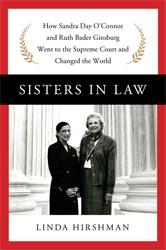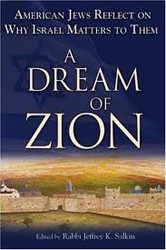By
– August 30, 2011
Ken Koltun-Fromm’s study of selected key figures and core themes in modern and contemporary American Jewish religion, psychology, literature, and popular culture opens with a provocative claim: “American Jews…constructed their selves in and through material objects.” In a series of often abstract, academic theory-infused close readings, Koltun-Fromm seeks to enlarge, indeed refocus our understanding of American Jewish culture by highlighting what he calls the “performative” in American Jewish expression, a cultural mode which reveals “a complex and ambiguous act of identity.” Ranging widely, casting a fairly eclectic net, from famous rabbi-intellectuals like Mordecai Kaplan (whose manuscript journals literally inscribe the “material,” and thus are symbolic of Kaplan’s “archival” Jewish “self”), Joseph Soloveitchik, Abraham Joshua Heschel, to assorted literary figures like Anzia Yezierska, Philip Roth, Cynthia Ozick, and Bernard Malamud as well as a reading of the famous film variations of “The Jazz Singer,” Koltun- Fromm threads his argument about the explanatory power of the “material” as key word for situating a rich portion of American Jewish expressive culture. The challenge, ultimately the difficulty, in absorbing Koltun- Fromm’s ambitious study is the relatively abstract meaning(s) he ascribes to the idea of “material culture” itself.
Given the author’s high-level, often abstract analyses, Material Culture and Jewish Thought in America will most likely be of interest only to academic audiences. That said, scholars of literature and popular culture will gain limited benefit from Koltun- Fromm’s brief readings of literary figures, or his overview of the various iterations of “The Jazz Singer” (incorrectly, he calls Samson Raphaelson’s original 1922 short story “The Day of Atonement” a play; Raphaelson did write a play called The Jazz Singer in 1925, before the famous 1927 Jolson movie), or the iconography of Lilith magazine covers. Perhaps Koltun-Fromm’s most resonant, suggestive reading is of Soloveichik’s particular way of imagining the wandering Jewish self in the city, where “urban space as a site of religious transformation” can become the transformative site of “the urban holy.” For me, this insight immediately conjures the young hero of Henry Roth’s Call I t Sleep (1934), along with other new world walkers in the city, in search of America’s redemptive promise. In this respect, Material Culture and Jewish Thought in America invites us to re-examine a range of religious-philosophical sources, for which we should be grateful.
Given the author’s high-level, often abstract analyses, Material Culture and Jewish Thought in America will most likely be of interest only to academic audiences. That said, scholars of literature and popular culture will gain limited benefit from Koltun- Fromm’s brief readings of literary figures, or his overview of the various iterations of “The Jazz Singer” (incorrectly, he calls Samson Raphaelson’s original 1922 short story “The Day of Atonement” a play; Raphaelson did write a play called The Jazz Singer in 1925, before the famous 1927 Jolson movie), or the iconography of Lilith magazine covers. Perhaps Koltun-Fromm’s most resonant, suggestive reading is of Soloveichik’s particular way of imagining the wandering Jewish self in the city, where “urban space as a site of religious transformation” can become the transformative site of “the urban holy.” For me, this insight immediately conjures the young hero of Henry Roth’s Call I t Sleep (1934), along with other new world walkers in the city, in search of America’s redemptive promise. In this respect, Material Culture and Jewish Thought in America invites us to re-examine a range of religious-philosophical sources, for which we should be grateful.
Donald Weber writes about Jewish American literature and popular culture. He divides his time between Brooklyn and Mohegan Lake, NY.





